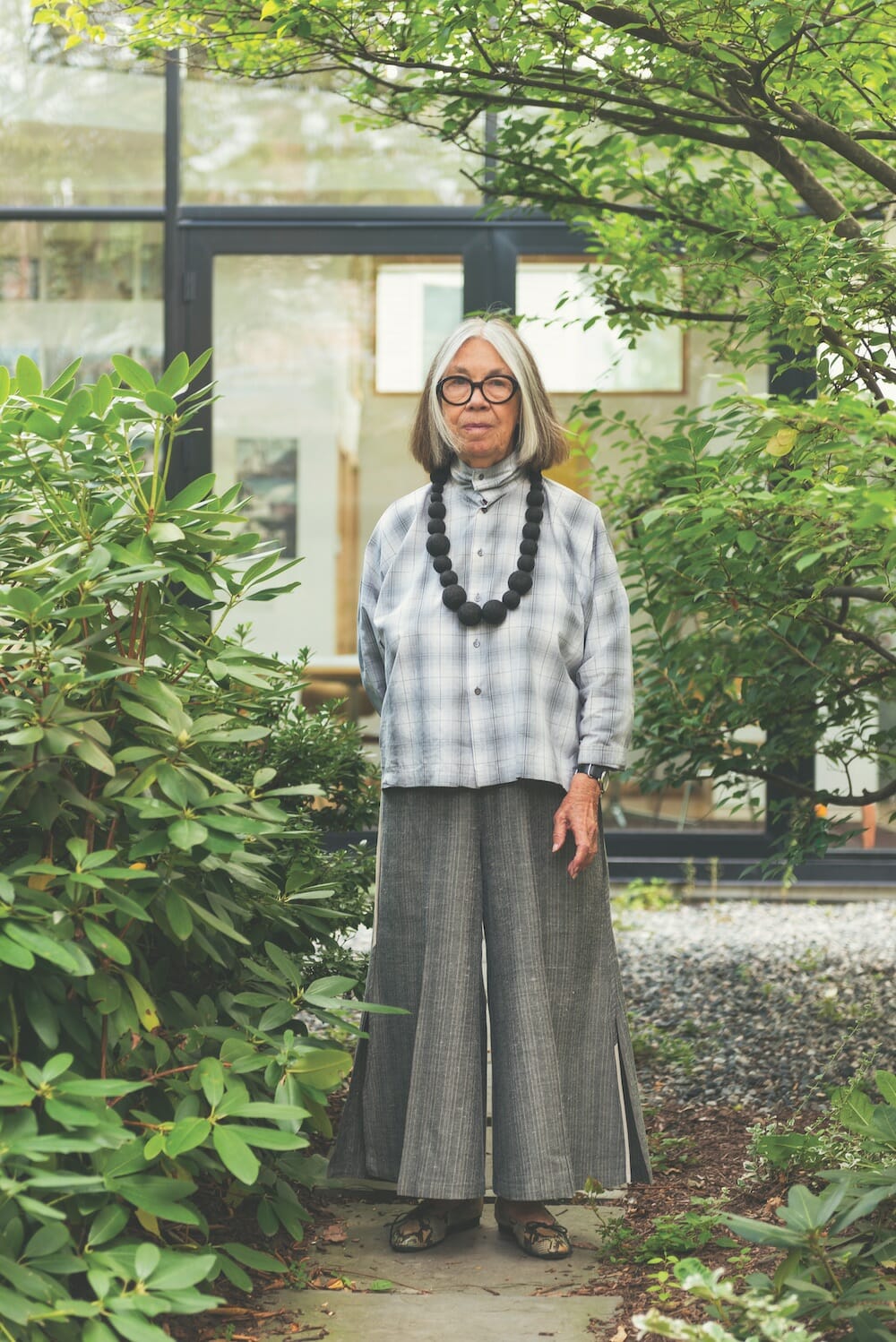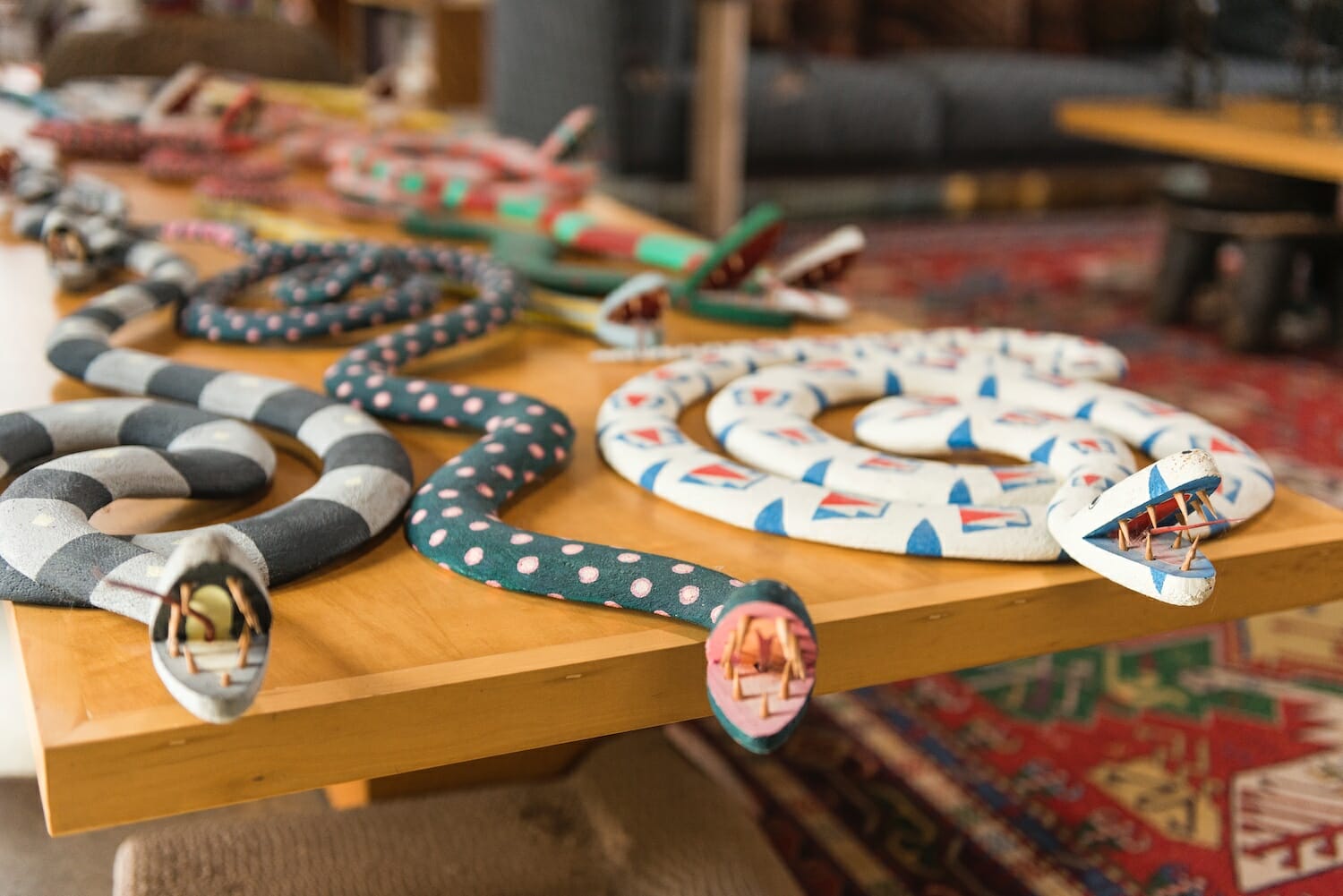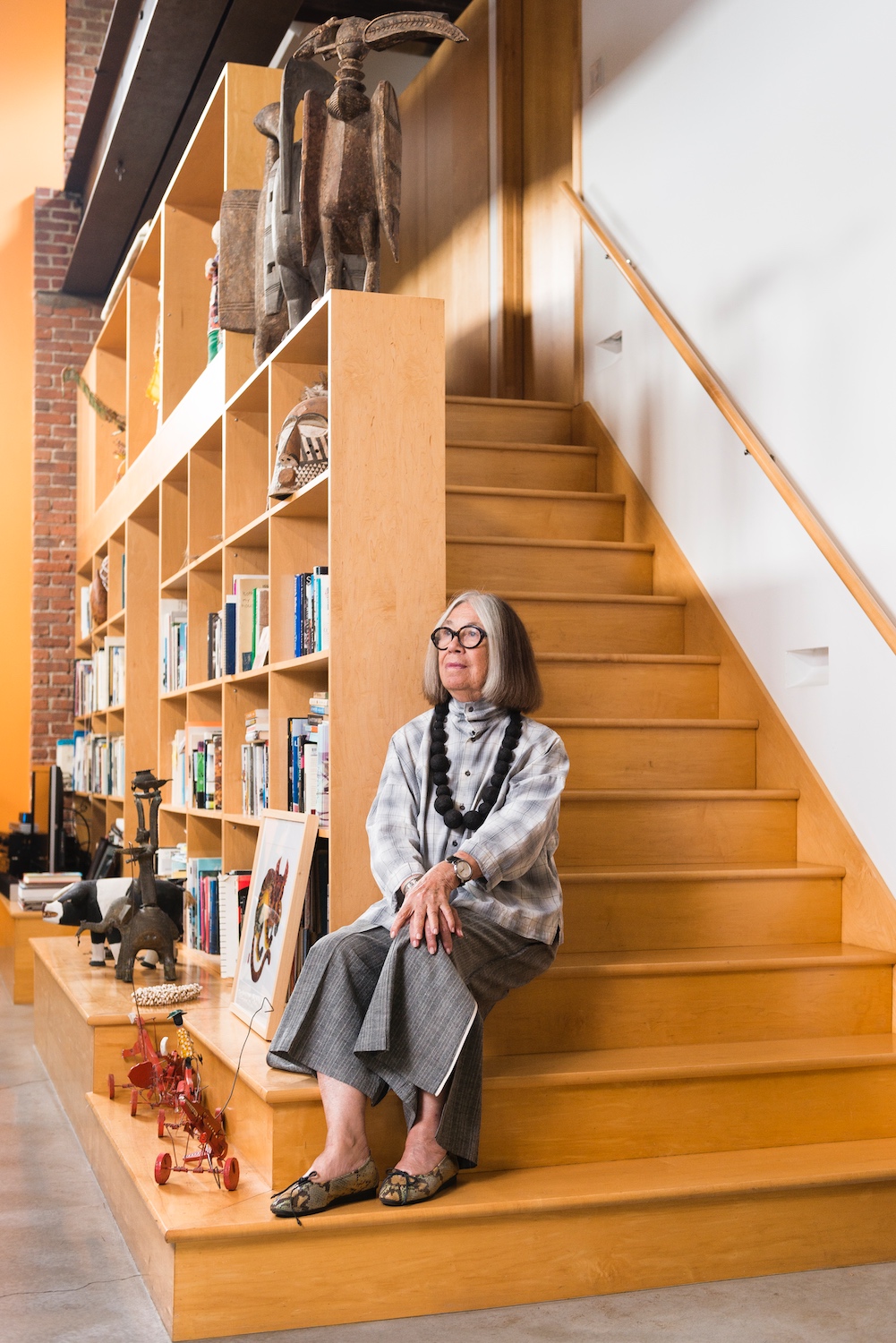Never Standing Still
An Interview with Adèle Santos
Whether Adèle Santos is transforming the MIT School of Architecture and Planning into a world-renowned institution, designing clothes and coats, creating public housing, re-building cities that have fallen victim to natural disasters, gutting and re-imaging her warehouse home that was once the site of a children’s circus, starting an architecture school, or merely being the wonderfully stylish and magnanimous force of energy that she exudes, she is never standing still.

Photos by Ben Gebo
Interviewed by Sarah Merion
She first started her design education by gaining a diploma from the Architectural Association in London before moving on to Harvard, where she completed her Master of Architecture in Urban Design. After these, she concluded her formal education by completing her Master of Architecture and Master of City Planning University of Pennsylvania.
Adèle has held various leadership roles in academic institutions and most recently was the Dean of the School of Architecture and Planning at the Massachusetts Institute of Technology (MIT). She was recruited in 2003 to come to lead the school, which she did for a decade from 2004-2014. In a testament to her ingenuity, the MIT School of Architecture and Planning received the esteemed award of #1 School of Architecture by QS World University Rankings in the final year of her deanship. Since stepping down from being Dean, she has continued to be a valued MIT facility member, co-director of the Levinthal Center for Advanced Urbanism, and active in continuing her private practice, Santos Prescott and Associates, which has garnered international reputation. Adele is an advocate for gender and racial diversity and has spoken on various lectures about the importance of representation.
I sat down with Adèle to talk about her life dedicated to forging new paths in design.
Sarah Merion: Let’s start at the beginning. Where did you grow up, and what was your childhood like?
Adèle Santos: As an only child growing up in Cape Town, South Africa, I was used to having to motivate myself in finding ways to make friends and to make my own fun. When I was young, I attended a school that was 1,000 miles away from my hometown. In the beginning, I flew to school when the year was starting, but then my family decided it was a time for me to take the train, so I had to take a train, which took at least two full days. It was a very long train ride, and I was only eleven at the time. I usually went alone, except on the rare occasion another little girl would come with me. The fact that my mother even let me do this is shocking! My life while growing up was an adventure and, in a way, I came out of that experience sort of fearless. Those journeys to and from school on the train have made a significant difference in my life and my ability to perceive the world, problem-solve, and find those small joys in life. It doesn’t really surprise me that I would later be chairman of a school of architecture, as I’m not afraid of much.
SM: Wow, it’s hard to imagine a young child taking a two-day solo trip these days. How did you use that fearlessness to discover your leadership potential?
AS: During my time in boarding school most of my friends were the “naughty” girls in class. They also hated sports and while I was around them, I found myself being in a position of leadership just from trying to help guide them to the right directions. By the time I graduated from high school, I knew I not only had leadership potential then, but that it was something I al- ways had. It seems to me that for young people, leadership is something you have or you don’t. It was just one of my personal traits. My leadership was the same trait that distinguished me and helped me pave my way in architecture school. I was the only woman in my year, but I was the top student. I had to have momentum and conviction that didn’t let me stop long enough to let myself and anyone talk me out of anything, especially in that environment. I use those leadership skills in my work now by act- ing as a community builder intent on building discourse.
SM: How did all of these early lessons about your strengths and capabilities impact your career in design?
AS: On those long train rides to school, I had to test the limits of my surroundings, so I learned how to explore and engage with the world around me. Creative problem solving has played a large part in my career. It impacts everything from how to get a loan all the way to designing a city. This skillset has helped me in all my projects, from designing clothing, to buildings, to salvaging international, environ- mental disasters.
SM: So then you started your career in architecture. What was the first big project you participated in?
AS: The thing I have always loved to do and will continue to do throughout my life is to build my own projects. The first project I remember being a part of was in Cape Town. There were these fantastic row houses, each with multiple units, on a hillside and one by one the tenants were leaving. I had a vision for the transformation I could make on this property and I decided, along with my cousin’s uncle, my mother, and my uncle, to buy the property and rehabilitate it. As we renovated the place, we decided that each collaborator could keep one of the units for themselves. I was ecstatic about that be- cause when I house myself, it’s got to truly be my place.
SM: Your first formal architectural project was with your family, I’m sensing your bold deci- sions. How did you choose who you wanted to work with on projects that followed?
AS: In all of my projects, I created a cast of characters or “playmates,” as I like to call them. These “playmates” took the form of faculty, collaborators, designers, financial managers, and even videographers. I think the way I brought people along the journey was by having enough conviction in my vision and making them want to be a part of it. The credit I get for being able to assemble these wonderful teams and collaborators has to be given to the fact that free spirits attract each other. All of my friends are wacky and a bit out there, but the most important thing is to have a sense of humor.

SM: You continued to lead when you became the dean of the School of Architecture at the University of California San Diego, how did that opportunity come about?
AS: I was on the faculty at University of Pennsylvania in Philadelphia, which is also where I had gotten my Master in Architecture and Master in City Planning, when I was told there was a new school of architecture being created in San Diego and I was asked to be- come the founding dean for the school. In the beginning I told them to go away, but they were persistent and eventually I agreed to go out to interview with them. I was hesitant at first be- cause the economy in the late 1990s didn’t pro- vide a very good opportunity to start up a new school. In evaluating whether I should do it or not, I made sure there was enough support and enough funding before I agreed to anything. I was intrigued by this opportunity because architecture hadn’t evolved at that time and I saw this change in the economy as a chance to be a part of transforming how architecture was taught.

SM: Having people from different backgrounds and experiences working together no doubt enhances a final product. How important has it been to you to ensure that you weren’t the only woman working on a project?
AS: It’s definitely a priority. When I went to California to lead the School of Architecture, my first task was to find my “playmates.” I had to recruit members of faculty, but I didn’t want to go about it in a conventional way. I amassed my chosen faculty after having a series of weekend discussions with folks from all over the country, all over the world, and from all different disciplines. More is more, in terms of diversity of thought, and it produces incredible results. By the end of my weekend discussions, my four chosen faculty came from disciplines spanning art and history, technology, social justice, and design. The most important part of building a faculty group was to have gender diversity and people with various backgrounds working together. Gender diversity was definitely a priori- ty for me. As a woman in a place of power, I felt I had this massive benefit to be able to impact this value onto my work, during a time that it likely wasn’t a priority in many fields.

SM: And how did you end up in Boston? What has made Boston feel like home?
AS: In 2003, I was living in San Diego, and received a call asking me to consider leading the MIT School of Architecture and Design. It wasn’t an easy sell, but I was heavily recruited from across the country, and at that point it was a great opportunity to build something new. When I arrived in 2004, the school didn’t have a great reputation. But I feel very proud that in my decade of being dean, I transformed the school into being #1 school worldwide for architecture by QS World University Rankings. That was a highlight in my career.
When it came time to make Boston my home, I found this place we’re sitting in now. It was in total disarray. The building was a former children’s circus school run by a community-oriented woman, and then it fell victim to a fire. So, I decided to rehabilitate the place, to bring it closer to the life it used to have, and now I call it my home and studio.
SM: What is your advice for someone who is just beginning their career?
AS: There are two really important aspects to having success. The first is to be optimistic, that’s the main thing. You have to believe in yourself. The second is to go out and experiment. A lot of people are timid, but you have to experiment with different things otherwise you won’t know. One other aspect that isn’t spoken much of is the need to be in a position of power. And if you fail or you go broke? You bounce up and do it all over again. I’ve been through all of that and that hasn’t stopped me.
